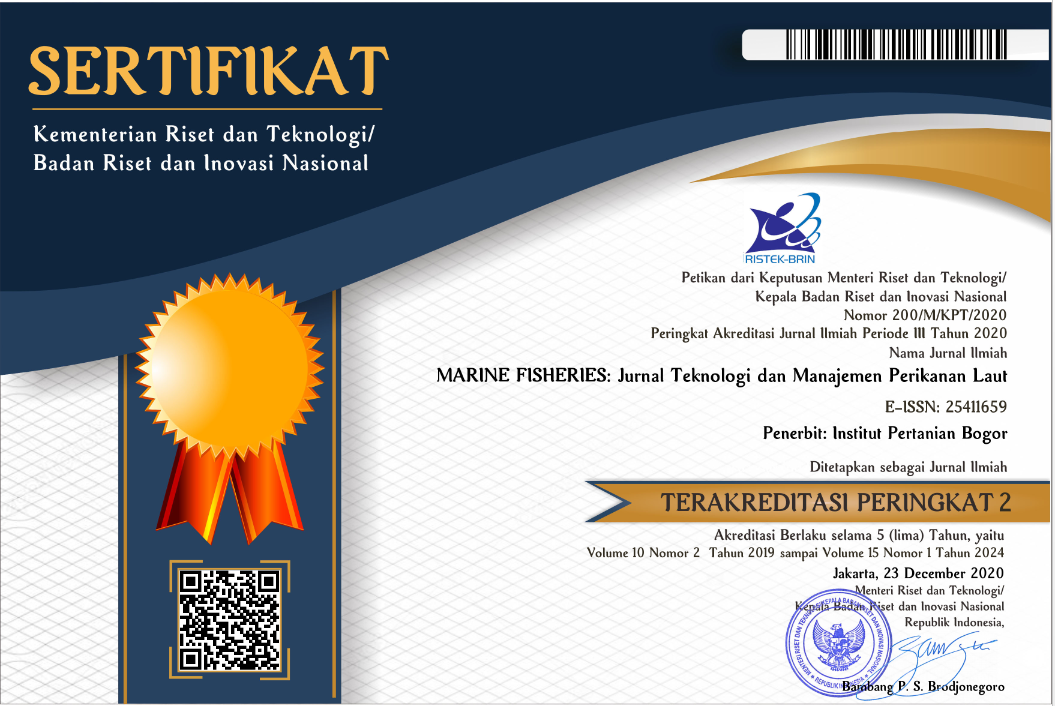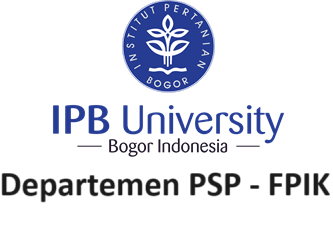Jaring Kekop (Gillnet) Fishery and Its Sustainability Level in Ranau Lake, South Sumatera
Abstract
Fishing activity to catch hampala (Hampala macrolepidota) using gillnet in the Ranau Lake has been quite intensive. However, there is a type of net developed by fishers to catch hampala in the same waters, namely “jaring kekop.” The existence of this net will increase the intensity of fishing in Ranau Lake which is already high, thus affecting the availability of stocks. The purpose of this research is to describe technical and biological characteristic of kekop net and to analyze the sustainability of kekop net fishery to catch hampala in Ranau Lake, South Sumatera. Data was collected by field survey method through direct interviews with fishers, observation and measurement of fishing unit, and participated in the fishing operation trips. The result showed that the jaring kekop used by fishers in Ranau Lake can be classified into the set gillnet with slightly different operation method from the common set gillnet. The SPR (spawning potential ratio) analysis of hampal fish obtained a value of 72% or > 40%, which means that the average fish caught is gonad ripe or fit to catch (SL50 > Lm). The sustainability values of the jaring kekop fishery were 51.4 for technical aspect, 6.5 for biological aspect, and 65.2 for social-economic aspect. From these sustainability values, it can be seen that the jaring kekop fishery in Lake Ranau is sustainable enough.
Key words: jaring kekop, hampala fsih, characteristic, sustainability, Ranau Lake
Downloads
Author(s) who published in this journal agree to following terms:
- Author(s) must understand and agree that the copyright script in published owned by the Marine Fisheries Journal. The copyright includes reproducing and selling the manuscript to all parties.
- Everyone can cite every manuscript published in Marine Fisheries for educational purposes, with the author's name and the Marine Fisheries Journal on reference.









